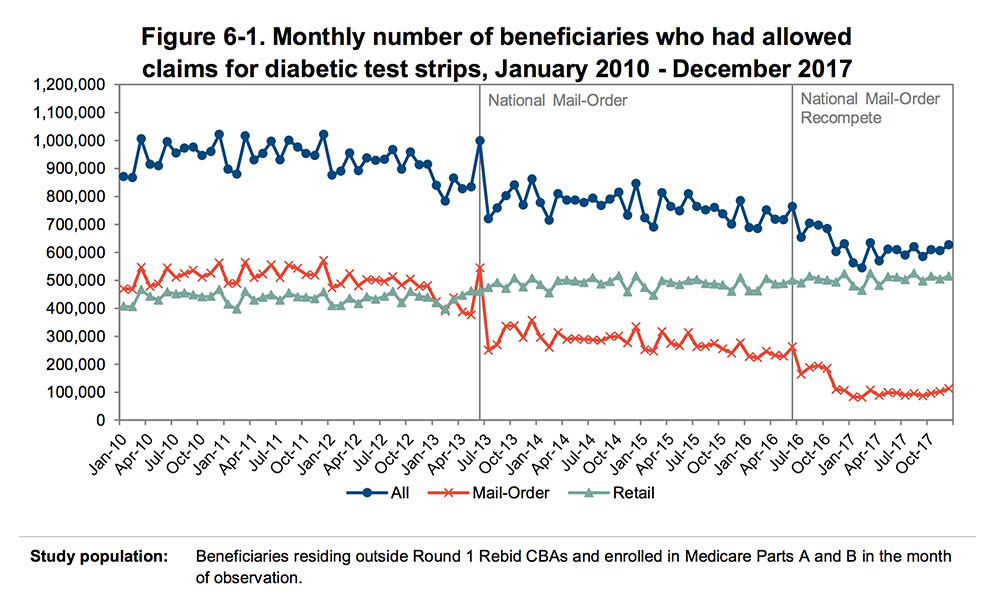National Mail-Order: Diabetes Benefit Use Fell, Retail Sales Grew
A new Medicare Payment Advisory Commission study of CMS’s national mail-order program for diabetic supplies showed a drop in benefit use and an increase in retail sales between 2010 and 2017, but did not see an increase in adverse health outcomes.
- By David Kopf
- Apr 16, 2020
CMS’s national mail-order program for diabetes supplies has forced a decrease in Medicare diabetic testing supply spending but an increase in retail sales, according to a new report from the Medicare Payment Advisory Commission (MedPAC).
In its executive summary, “Examining Impacts of the National Mail-Order Program on Medicare Service Utilization and Beneficiary Health Outcomes” acknowledges the opposing views between CMS and HME industry and patient groups such as the National Minority Quality Forum when it comes to national mail-order for diabetes: Does the program prevent waste, fraud and abuse, or does it limit patient access?
To examine national mail-order’s impact, MedPAC studied Medicare beneficiaries with diabetes and beneficiaries regularly using insulin.
Looking at allowed Medicare service use, MedPAC found a decline in use and reduced payment to suppliers in the 130 CBAs of Round One 2017 and Round Two Recompete. The declines began in 2012 and a further drop in July 2013. For example, the total Medicare users for test strips (HCPCS code A4253) per month dropped from approximately 950,000 in 2010 to 900,000 in 2012 and then to 800,000 after July 2013, and remained at this level through the end of 2015.
On the retail side, the study found that beneficiaries continued to have local access to test strips thanks to retailers. For instance, 99 percent of FFS beneficiaries in 2017 lived in a county with at least one supplier that billed Medicare for retail test strips in that year. The study also showed that between 2012 and 2013 the number of retail test strip users increased from about 450,000 per month, and then retail test strip users grew to 500,000 a month after July 2013.

“This increase in retail users could mean that some mail-order users switched to retail,” MedPAC noted. “Through further analyses, we found that 10 percent of beneficiaries who were using exclusively mail-order test strips in the first half of 2013 switched to retail test strips in the second half of the year, while in 2012, the rate was 1 percent. The increase in retail users, however, is not big enough to compensate for the decline in mail-order users, meaning that some beneficiaries ceased acquiring new test strips after July 2013.”
Interestingly, the report noted that, because national mail order led to a drop in the utilization of mail-order test strips and a modest increase in retail test strips use, a larger number of beneficiaries stopped using DTS entirely. However, after examining mortality, hospitalization, and ER vist rates in diabetics and insulin users between 2010 and 2015, MedPAC noted “we did not find any evidence that the implementation of the [national mail-order] led to elevated rates of adverse health outcomes.”
The full report is available at bit.ly/2VdU4XZ.
About the Author
David Kopf is the Publisher HME Business, DME Pharmacy and Mobility Management magazines. He was Executive Editor of HME Business and DME Pharmacy from 2008 to 2023. Follow him on LinkedIn at linkedin.com/in/dkopf/ and on Twitter at @postacutenews.